Greg Hudson - Getting Roofing Done with Georgia-Pacific Building Products - PODCAST TRANSCRIPT
January 12, 2024 at 12:00 p.m.Editor's note: The following is the transcript of a live interview with Greg Hudson from Georgia Pacific Building Products. You can Read the interview below or Listen to the podcast.
Intro: Welcome to Roofing Road Trips with Heidi. Explore the roofing industry through the eyes of a long-term professional within the trade. Listen for insights, interviews and exciting news in the roofing industry today.
Heidi J. Ellsworth: Hello, and welcome to another Roofing Road Trips from Roofers Coffee Shop. This is live. I am with Greg Hudson. My name is Heidi Ellsworth and we are here in Nashville at the NRCA Fall meetings, and we're doing a roofing road trip.
Greg, thank you.
Greg Hudson: It's great to see you. Thank you for having me.
Heidi J. Ellsworth: It's great. I always enjoy it. We always get to spend some time together.
Greg Hudson: Yes, we do. Yes, we do.
Heidi J. Ellsworth: And you always have great things, great things to talk about.
Greg Hudson: I don't know about that, but okay.
Heidi J. Ellsworth: Okay, so that's what I thought, on this Roofing Road Trip, it'd be really fun. Let's kind of talk about the year and some of the hot topics, and we're hearing a lot of them while we're here. So just to kind of start out, first of all, let's do an introduction, if you can introduce yourself to everybody, who you are, about Georgia Pacific, what you do there.
Greg Hudson: I'm Greg Hudson. I'm the Director of Commercial Den Sales at Georgia Pacific. I work in the building products division and on the roofing side, our primary product are DensDeck Roof Boards.
Heidi J. Ellsworth: And we love having you on the Coffee Shop. First of all, I have to always say that because it's so much fun. Your team is so great. But how has this year been? Kind of take us back to January, which I just can't believe we're in mid-November right now, but take us back and how has this year looked on commercial roofing?
Greg Hudson: Well, I can believe we're in mid-November because I think I've aged a lot this year. It is been an interesting year. It really started off, you think about coming out of the impacts of the pandemic, the material shortage and really this run up on roofing that was not sustainable, clearly.
But as we transitioned into 2023, we started seeing early indicators that the industry or the market was in an overstock position. People, to ensure they had the supply for the jobs that they had on the books, they gobbled up all the material they could, whether it was in a distribution situation or contractors in general. They bought warehouse space. They got into buying material and we've created this overstock position and a lot of us thought that it was going to be transitory, two to three months. We've heard Q1 of 2023, we'll be through this. It ended up not being the case.
It ended up being quite the slug throughout the year. And as a manufacturer, you're trying to plan your critical raw materials, your staffing and everything did, but understanding that you're not losing. You're just working off yesterday's material. And that was a big challenge, fortunately, and my company looks at it from a long-term point of view, and as long as we necessarily were not getting beat, then the market should come back to you and let's look at those indicators.
And as we got towards the end of the year, through peak season, it really feels like we're coming out of the overstocked position and you're seeing projects get back to actively bidding projects, actively working projects in the natural, we call them daily shipments, are really starting to get back to those norms. So we're excited about that. We're excited about getting out and competing again. It's a tough time when you have salespeople that can't sell, because that's what they want to do.
Heidi J. Ellsworth: Exactly. Well, it's interesting, Greg, because I started back in the '90s and I remember back then, most of the contractors, the big contractors all had big warehouses and they were storing and everything. And then that just changed over the decades of, it's hard to say decades, but over the decades of, to just in time. And so this last year, I mean through Covid to now, it's almost unpredictable just on how people are renting these huge warehouses. Again, trying to figure out what to do. But now everybody's like, "Well, I kind of like to go back to that, just because."
Greg Hudson: They would, cost of inventory is a big deal. I had a very large national contractor tell me that we got in the supply business unintentionally. We don't like the supply business. We like the ability to call in our order within a week and get that material delivered within a week. Low carrying costs, the actually delivery, storage and handling. Very important for system warranties and product warranties as well. So, it's delivered, stored and handled the right way.
Well, doing that with a long tail on your inventory is tough. Doing it from the manufacturer's warehouse to the job site is easy and it is beneficial for all. And then, actually, I give the distribution companies a lot of credit out there and the other manufacturers, they got really good at meeting those just in time deliveries or the last mile that the distributor handled and we got really good at it and the contractors benefited from it and we did as well. So getting back to that is a good thing.
Heidi J. Ellsworth: And you think you see from your customers that you're talking to, from the big commercial roofers, what you're saying is they're kind of like, "We want to go back to that. We like that."
Greg Hudson: They do. They do. Even the smaller contractors, like I said, they were trying to access material to do jobs and there's barns that had material, in addition to any buildings that were out there. But at the end of the day, we feel we're in that spot now and we're getting through it. There may be pockets or areas of the country that might be a little bit behind. Fortunately, so far it's been a mild fall, been able to get some roofing done and if it holds out through the winter, through the northern climate, we'll be able to get even more roofing done.
Heidi J. Ellsworth: Yeah. Well, and speaking of weather, you have to talk economy and weather no matter what, right?
Greg Hudson: We're in the roofing business.
Heidi J. Ellsworth: I know, it's in the roofing business.
So this year has been strange weather. I mean, from no hurricanes for the most part on continental US to what we dealt with. Just this morning, it was on the trends report, 17 major health storms in Colorado and a lot of other places. What are you seeing across the country?
Greg Hudson: It is something very interesting. It's something that we actively got into tracking because of what our DensDeck Roof Provide for a roofing system. And that's that resiliency.
And they used to be called 100 year storms. Now it seems like we're having them every year, and the impact of these storms are significant in dollars. And that's because some buildings are bigger. We're in areas that have more frequent storms. There's so many different things. If you think about the population shift from north to south and everything that comes along with that, and you get some more of these violent storms, but whether it's hail, whether it's high winds, I mean there's so many different things that affect or impact the roof system and the impact of that on the building owner, on the contractors, on the manufacturers, it has an effect.
And I do think that's a tailwind for this industry, not only from a manufacturer's opportunity to innovate and build more robust systems, but for contractors to install these more robust systems and be able to hand a roof over to a billing owner that your confident is going to withstand some of these volatile storms that are out there.
Heidi J. Ellsworth: Yeah, because it's not going away.
Greg Hudson: No, it's not.
Heidi J. Ellsworth: It may be shifting sometimes around the country, but it's not going away.
Greg Hudson: And I know this is primarily, we're talking about the US and North America here, but Europe has been experiencing hail and that's not something that they're used to. We have a marketing manager out of the UK that he's showing these giant hailstorms in Germany and UK and it's very interesting, because one of the things that when you think about the impact of what hail does to a roof system, it could be catastrophic if it's not a robust system.
Heidi J. Ellsworth: Right. Well, okay, let's talk a little bit about that because resiliency is a big part of sustainability and sustainability is the word right now. 2023 going into 2024, everybody's talking about it. We know it's been happening for many, many, many years, but it's just really in the roofing industry starting to make a difference. Talk a little bit about that.
Greg Hudson: We got to get a common nomenclature, and that's something we're working on in the Roofing Alliances, is working with Clemson to really identify how we describe the two and the connectivity between the two. Well, the first part of sustainability, if you think about it, comes from resiliency. And let's ensure the roof last as long as it was intended or designed to last, and that keeps those materials out of the landfill.
You look at the requirements that go along with what is going into the landfill from a tear off. And when we're a heavy reroof application across North America, 80/20, 70/30, whatever you want to call it, reroof to new, that's a lot of materials. At the same time, you have energy codes, energy codes being important, spit that one out, being enforced and there's opportunity here for us. You want energy as costly energy has a carbon impact, so you have more insulation going on a roof, so you want to protect that.
And that's again where we play. We want the membrane to last, the lifecycle like it is expected to, but we want to protect that insulation as well. It has a very long lifecycle. So as long as we protect that, then it'll keep it out of the landfill as well.
Beyond that, there's a lot of challenges on the sustainability side. We think about the impact of things like solar energy. You think about we're putting so much more on a roof now than we were even 20, 30 years ago, and you have more people accessing that roof that are not roofers, not saying they're wearing steel golf shoes, but you get concerned sometimes when somebody does leave the punctures, they end up in a roof because somebody's servicing equipment, whether it's solar, rooftop equipment, 5G, now soon to be 10 G.
Heidi J. Ellsworth: We heard about that this morning.
Greg Hudson: Heard about this morning, and you get these people going up there. So again, building that robustness into the roof is going to be very important so that roof lasts its lifecycle tied into the external sustainability efforts.
Heidi J. Ellsworth: Really, when you talk about solar, too, you want the roof to last longer than those solar panels. You don't want to have to be worrying about that.
Greg Hudson: That's a bad day when you have to pull the solar panels off to replace the roof and then put the solar panels back on. It's a waste of material. It's a waste of time and everything going along with it. And then understanding the additional hazards when you do add something like solar, increased risk of fire, more punctures, you have these arrays that they sit on, and the way we look at it, we want to make sure that they're attached the right way.
You heard Mark Graham talk about that this morning as well. Just ballasting these things doesn't always work. I think the Rakowi teams have followed, as wind damage came, you had external equipment blowing across the roof, causing damage to the roof. The wind didn't lift the roof off, but it's tore up from this equipment blowing around.
Heidi J. Ellsworth: And you don't want any of that equipment coming over the edge.
Greg Hudson: Oh, god forbid. Yes, yes, absolutely.
Heidi J. Ellsworth: And so, right. I mean it really all ties back together. When you talk about the resiliency. We'll get that word right. When you talk about that, that really has to do with a strong enough roof to hold what people, because everyone is using those roofs for ROI now, for one thing or the other.
Greg Hudson: They are. Yes. And it could be tied to ROI that I want to potentially get some additional revenue out of my roof, or it could be some municipal codes of what you have to do with gray water, vegetative roof system. There's so many different things that will be impacting that as a business owner, as a building owner, even if you're renting them out. So it's going to be important that we fully understand that.
And then as we look at some of the largest long-term roof owners, long-term building owners, our government agencies, whether that's K through 12 education, higher education or actual Federal and State level governments, they've typically built fairly resilient.
Well now, under the inflation reduction act, certain pieces of it have these green requirements in them and the materials you select, the way you recycle, it's evolving, but it's getting implemented. And when you think about as a manufacturer looking at, this has been, we call it a vertical where we've been very popular and we got to make sure that we're not only popular today, but we're ready to be popular in the future by meeting these additional goals.
Heidi J. Ellsworth: Right. Well, another topic that came, there's been so much discussion today, but on our trends report this morning, we were also talking about the stormwater runoff and green roofing in green roofs. And again, talk about resiliency and durability, you have to have that when you're putting, because it's not always going to be about just a pretty green roof. It's going to be about, there is so much with these storms and we're kind of circling here, but that water needs to be managed.
Greg Hudson: The water needs to be managed, that severity of the storms. I mean, we think about the impact of large volumes of water coming in a short period of time, long saturating rains. I grew up in farmland, I live in farmland. You want long saturating rains. You don't want these flash flood moments. And when you look at these urban environments and even some of these suburban environments, you overwhelm the system. And so they're trying to find different ways.
I was actually talking to a manufacturer today that has, and for many years they've had cisterns under the building. They've been capturing their rainwater and then the rainwater pumps back up and they have part of the roof is vegetative roof system and it goes back to water. It was a great concept and it was really, one, it showcased some of the products that they have that work in those areas. But it also, it was the right thing to do. And I think a lot of manufacturers, a lot of contractors, a lot of distributors, they want to do the right thing, but they want to better understand, what are those right things?
Heidi J. Ellsworth: And it's not going to go away.
Greg Hudson: No.
Heidi J. Ellsworth: I mean we are seeing it through what you talked about, the tax incentives or just straight out regulations and code. This is all going to be happening, so it's really important to be looking at those right products.
But I do want to talk a little bit, we kind of brought that up, is the economy. So when we started out this year, I mean I can remember this time last year, it's going to be a bad year next year. The economy's going to go down.
Greg Hudson: The recession that never happened?
Heidi J. Ellsworth: Yeah, recession that never happened. All the pessimism. And I'm just like, "La, la, la. I'm not going to listen to you." But it didn't, yeah, there were parts of the country that we've seen some softening, but I think overall, like you said, people are catching up.
Greg Hudson: It is. It is. There was a large book of work out there, whether it was new construction where critical path was very important. Like I said, bringing either more storage capacity for inventory or models changing. You think data centers are one thing that continue to grow, but there was a need for that.
And then at the same time, you have this large building stock that's out there that needs to be reroofed every 15 to 20 years, depending on the system that you're looking at. And those have a common cycle. So if you're only doing a certain amount per year, you've got to keep up on that as you add new really new demand and these new construction, so good amount of work, contractors have reported that. Now the days of having an 18-month backlog probably aren't going to be here for a while. But as we got through it, felt like there were some good incentives. There was a good backlog of work.
But one concern that I hear about quite a bit is really the increased cost associated with money, whether it's interest rates, whether it's general conditions, whether it's your working capital, your liquidity and then think about that, especially as you had a lot of your cash tied up in inventory when you're not a supplier or manufacturer as a contractor. So real challenge there. But as they got through these, they're getting their working capital back, which is good.
So it's really going to depend now on how building owners are looking at their budgets, whether it's a school levy that's going to pay for a roof or some state funded education that's going to add to that, or just somebody that owns a parts store that says, "Hey, this is my maintenance budget. What type of roof can I get for that?" So that's really going to depend on how we look going forward when it comes to potential recession.
Heidi J. Ellsworth: And you had also said there has been, you've seen some shifts between new construction and reroof probably more towards the beginning of the year or maybe last year.
Greg Hudson: More in 2022. Like I said, after the impact of Covid, end of '21 into '22, you started seeing that because like I said, they could pay more because their critical path was much more important than somebody that, let's say they're getting close to the end of their life cycle and they could push it for another six months to a year because their roof, it's not leaking, but we probably need to think about doing that. Or they could patch or do different things on top of it.
Now we're seeing that transition back to more of our heavy roof. And if you look at any of our forecasting data that we look at a lot of different data, it is going to be more indexed on the historical trends of 80/20, 70/30, reroof to new construction and the commercial low slope space.
Heidi J. Ellsworth: Well, and every town I go to, and I travel a lot as you do, we both do, there's still tons of cranes. I mean looking just around here in Nashville.
Greg Hudson: Nashville is still a booming city.
Heidi J. Ellsworth: A lot of cranes. But also, it is interesting to me as we look forward, because I think some of the reroof in the private sector has been kind of put off possibly, either because of low occupancy rates, a lot of different things. So it's going to be interesting to see how that demand starts coming back.
Greg Hudson: One thing, and we'd look everything by vertical and in that urban high rise, whether that's multifamily or office space particularly, is going to be hit hard. Going forward in the future, probably not going to be a lot of new construction because more people are working from home, less occupancy. A lot of stuff going on with that.
Fortunately on the roofing side, those are typically small roof footprints and where you look at the big verticals that are continuing to grow, data centers will continue to grow, warehousing will continue to grow. Education being a bread and butter. When kids are back in school, there is a value for them being back in school. It's a good thing. And of course they're going to need roofs associated with it. And then industrial, industrial continues growing. Those are typically pretty big footprints as well. So good opportunity on the roofing side. But when you think of other building products, some of these high rises that we see, they're going to be challenged because of the impact on that.
Heidi J. Ellsworth: Greg, totally side question, but I'm always curious about this, but I think about usually when there's this kind of void that we see coming up with the movement of people working at home and have the occupancy rates going lower, but that always seems to generate kind of this unity, this opportunistic spot of what are we going to do with these buildings? And to me, the roof becomes an important part of that because it's another factor of how are you making money back on that roof, where it's dining or working out?
Greg Hudson: What am I doing, whether I want to attract tenants or I want to use it to for like we talked about, whether it's solar or different ROI things. And it is, I do think that folks are going to be looking in that. I can't speak for any of the large commercial real estate management companies that own these or these developers or stuff. But like a lot of things in this country, a door closes, a window opens, is that probably where you going?
Heidi J. Ellsworth: I kind of we've been doing it, yeah.
Greg Hudson: I don't know what that window leads to and it's going to be interesting, but it's really going to depend on human behavior. And I do think that you go through these spells, are we going to be 100% remote? No. Are we going to be 100% in the office? No, but there is value as a corporation, especially if you have a strong culture, to have people in the office a certain amount of time. So that way that culture can really permeate throughout and people can see the value in that. But what that number is, I don't know. And I don't know how other companies are looking at it.
Heidi J. Ellsworth: I don't either. It's one of those things though that you kind of like, this is a fun thing to think about.
Greg Hudson: I'm willing to bet there's somebody somewhere going, "Okay, this isn't going to pay off in the next five years, but maybe 10 to 15 years. This is going to pay off big." And look at it that way.
Heidi J. Ellsworth: Because people are going to want it and it's going to be a new way, probably something we don't even imagine right now will be happening five years from now.
Greg Hudson: You get these cycles and you have seen it before. You see these urban sprawl, urban renewal, urban sprawl, urban renewal. And it's going to be interesting to see how we address these. And along with some of the headwinds we talked about, whether it's meeting sustainability goals, whether it's resiliency associated with it, and then the financing that comes along.
Heidi J. Ellsworth: Everything. And looking forward into 2024, I do obviously, like we've already talked about, access to capital, interest rates. Sorry, I hope this doesn't offend anybody, but my dreaded election year, I'm always like, "Can we just do business?"
Greg Hudson: You sit there and you look at it and say, you look at it actually a lot of business, they just want to know what the playing field's going to be. And you get the volatility around what it could be. And you model out multiple sides as you look at it. And then you're like, "Could this even be implemented?" I don't know.
Heidi J. Ellsworth: Every four years. It just messes with us.
Greg Hudson: It is. And it's going to be a challenge, but I always look at it this way. You're going to get challenges, but challenges create opportunities and opportunities for individuals, opportunities for companies and opportunities for us as manufacturers say, "If we can solve this better and people value us more, that's good for us. That's good for them. That's a mutually beneficial outcome." And I'm a big fan of that. I don't ever want them to be catastrophic or anything like that. But a challenge is a good thing. It's a good thing.
Heidi J. Ellsworth: It's a good thing.
Well, and thinking about that again, going into 2024, what do you see as some of the, besides what we've already talked about, but when we're looking at new technologies, new innovations, what are some of the key focuses do you see coming into next year?
Greg Hudson: Well, that's it. That's a great question. One, I think everybody wants to get back to whatever normal is, whatever normal is. You're never as good as you think you are and you're never as bad as you think you are. But I think everybody wants to get back to, like you talked about those just in time deliveries where you did your role in this whole roofing sphere, you did your role, and if you're a contractor, you didn't have to be a supplier. And if you're a manufacturer, you didn't have to be something else. I think a lot of folks want to do that.
I think better understanding of what that playbook is, whether it is around sustainability goals, whether it is around resiliency needed, insurance. You see an insurance touch a lot of different areas. They're not on the building necessarily yet, but they're touching different areas on the auto side and medical insurance is like that. So what about the commercial building? As we think about the commercial building, what are we looking at there?
I also at it as a great opportunity as a manufacturer to innovate. If you're not, we call it creative destruction at our company. It's one of our core values. And it's like if you're not creatively destroying your own products, the market will. And when the market does, you don't get to participate at the same level.
Heidi J. Ellsworth: Exactly he'd say Blockbuster.
Greg Hudson: Correct. Correct. Nokia phone.
Heidi J. Ellsworth: Exactly. Blackberry.
Greg Hudson: Correct. Or the one that always resonates with me, and I hope it's true because I've repeated a few times, but I heard that, can I say the name Kodak?
Heidi J. Ellsworth: Yes.
Greg Hudson: Okay, let's start.
Heidi J. Ellsworth: Yes, you can.
Greg Hudson: Kodak, Kodak had a ton of patents on digital photography, but just locked them up and never used them. And now you think about that. I mean-
Heidi J. Ellsworth: Look, we're doing it right now.
Greg Hudson: Correct. You think about that compared to what we did with photos and everything and Kodak was the brand. And now it's an afterthought. It's gone. So you got to do something, you got to a leverage set.
Heidi J. Ellsworth: Well, and you are the leaders, right? You're leaders out there on the cover boards and really that protection of the roof. And so that kind of innovation has to happen and you need to see it happening every day. And I mean, your hail products, very severe hail.
Greg Hudson: Our StoreMax product, we're very, very proud of our StoreMax product. We're very proud of the performance of the product, not just the individual product itself, but the actual performance as it's made its way. It's like we're three years in, a little over three years in on that product and very happy with the product.
Heidi J. Ellsworth: Yeah, I remember we helped launch it. Yes, right there on Roofer's Coffee Shop.
Greg Hudson: Yes, you did. And thank you very much. And what's the interesting part on StoreMax, just to get a plug in here, is it was designed for the very severe hail region. What we are seeing is more people want that product just for robustness outside of the very severe hail.
Heidi J. Ellsworth: That makes sense.
Greg Hudson: And that goes a long way. And being able to work with all these great system manufacturers out there on ensuring that a component like that in their system performs to the standards that's needed has been a great opportunity for us as well.
Heidi J. Ellsworth: That's great. Well, again, we were talking about this a little bit before we started the podcast, but when you look again at the weather, and we don't know where the very severe hail is going to be anymore. I mean it can be... And even what used to be just hail-
Greg Hudson: Severe hail just expanded even more. And now you're seeing hail in areas that typically didn't see it or they saw it once every 15 years or something like that. If you look at the data, they're seeing it more frequency. So how we're addressing that, and it's something that should be considered and StoreMax might not be the right product for you, but I would definitely look at and putting in a cover board, and-
Heidi J. Ellsworth: Especially when you're talking about the equipment that's going on the deck and everything that's going.
Greg Hudson: Foot traffic.
Heidi J. Ellsworth: Foot traffic and all these livable spaces.
Greg Hudson: Yes.
Heidi J. Ellsworth: Yes. We need it. Well, thank you.
Greg Hudson: Thank you.
Heidi J. Ellsworth: This is great. I love these conversions.
Greg Hudson: Always fun. It's always fun to have these con- we could sit and talk for hours off camera. It'd probably be a little less awkward than on camera. But thank you.
Heidi J. Ellsworth: But I think everybody out there appreciates it. I know, I do. I learn so much, and this is the kind of stuff that, I don't know, it is great to be able to have it now looking into 2024 and what are some of the things as a contractor, you should be asking, especially as a commercial roofing contractor, looking at your roof systems, looking at the durability.
Greg Hudson: Looking at your training. The NRC has so many great opportunities to receive training, whether it's a pro cert program, there's so many different pieces out there to really take unskilled labor to skilled labor. I recommend it. It is a symbiotic relationship for us as a manufacturer to work with a great group like the NRCA. And then you get to collaborate with all these people that touch so many different pieces of it. The offerings that the NRCA has, reach out, research and decide if that's for you.
Heidi J. Ellsworth: We've heard some great things this week. I mean, excellent when it comes to what is happening around training, the track program and like you said, pro certification and the labor shortage and how it's really being addressed. I mean, on so many levels here, from continued career technical education, to the certification.
Greg Hudson: The CTs, to the Clemson, to the Clemson courses that you can take online, that are phenomenal courses. There's lots of different things for different channels of the roofing industry. And there's certain things for the installer, the foremen, to run a business, to just better understand the industry, A lot of opportunities. And they're low cost opportunities, too. And then at the same time, you get to meet great people.
Heidi J. Ellsworth: I know, I know, friends for life. That's what I say. That's what I say.
Greg Hudson: Exactly. Exactly.
Heidi J. Ellsworth: Well, thank you so much, Greg. And we'll, we're heading off to the Roofing Alliance after this and we've got a lot of great stuff going on here. But thank you so much for watching and listening. This is available both on YouTube and on your favorite podcast channel, so be sure to set your notifications. You don't want to miss any of these Roofing Road Trips. We'll be seeing you next time. Hopefully, maybe live from the road on this Roofing Road Trips.
Outro: Make sure to subscribe to our channel and leave a review. Thanks for listening. This has been Roofing Road Trips with Heidi from the rooferscoffeeshop.com.












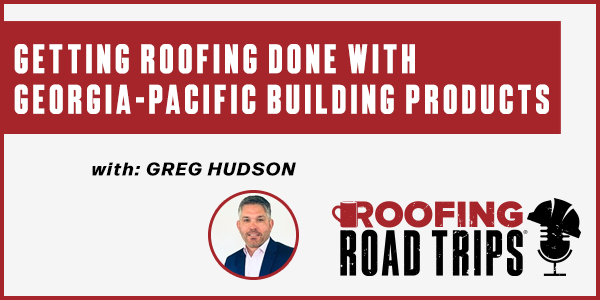
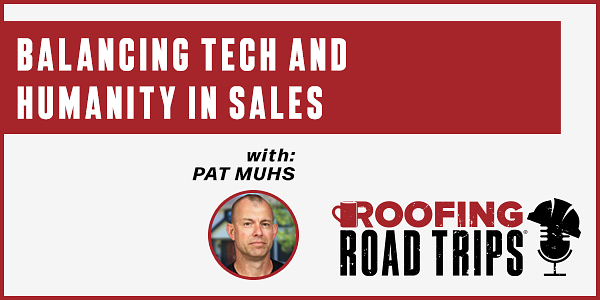
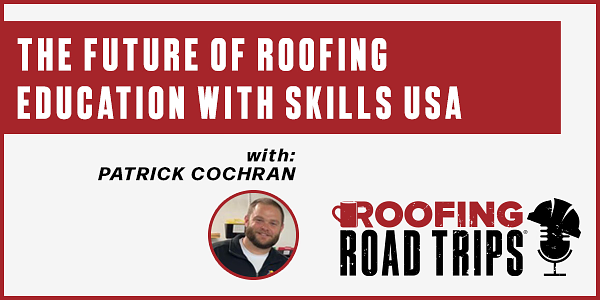
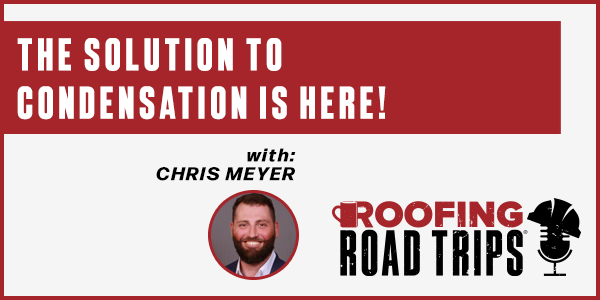

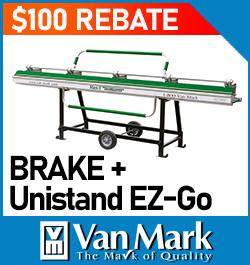


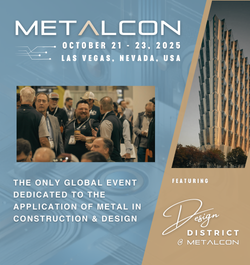
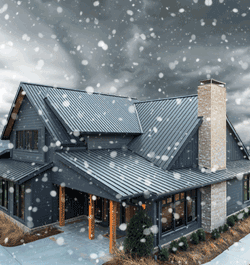

Comments
Leave a Reply
Have an account? Login to leave a comment!
Sign In